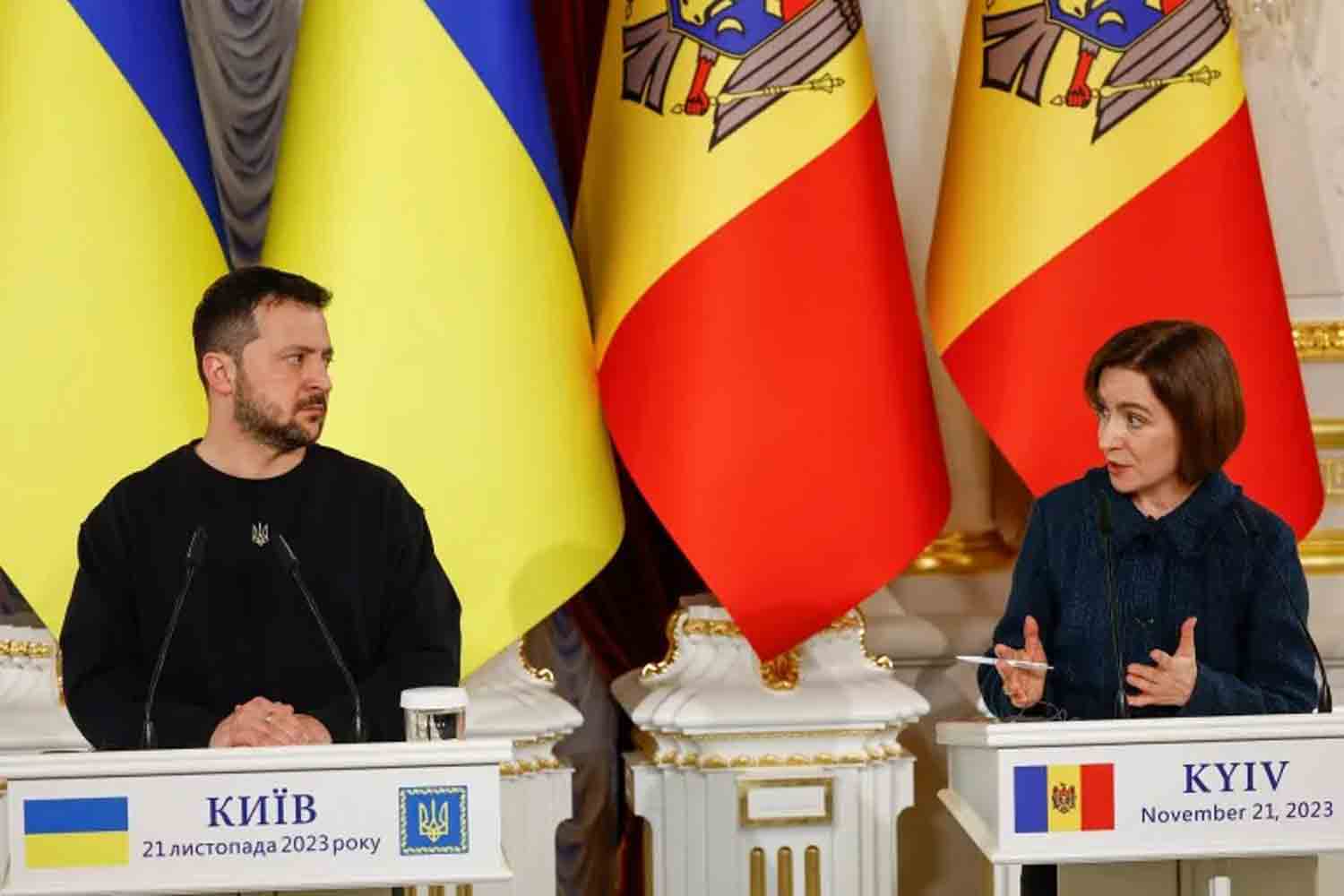Russia has accused Moldova of orchestrating a military operation in Transnistria, a region that is supported by Moscow, raising alarms among analysts who fear it could be a pretext for a “false flag” operation in Moldova.
Earlier this week, Russian intelligence reported that President Maia Sandu of Moldova was preparing for military action in Transnistria, which shares a border with Ukraine. Sandu was inaugurated for her second presidential term on Tuesday.
On Wednesday, the Russian Ministry of Foreign Affairs asserted that NATO was transforming Moldova into a weapons supply center for Ukraine, a claim that is likely to intensify concerns that Moscow may be looking for a rationale to take action against its smaller neighbor.
Here is an overview of the current situation between Russia and Moldova, along with potential future developments.
What are Russia‘s claims?
On Monday, Russia’s Foreign Intelligence Service alleged that President Sandu of Moldova was planning a military initiative in Transnistria. Russian intelligence suggested that this military action could lead to an escalation into conflict.
Adrian Balutel, the chief of staff to Sandu, dismissed the allegations, asserting that the nation had no intentions of militarily intervening in Transnistria, despite its claim over the territory as part of Moldova.
On Wednesday, Russia introduced a new accusation, alleging that NATO, led by the United States, had supplied a significant quantity of arms to Moldova in recent months. Maria Zakharova, spokesperson for the Russian foreign ministry, stated that Moscow suspects these weapons are ultimately meant for Ukraine, referencing Sandu’s pro-Western stance to support her assertions.
In recent months, Russian President Vladimir Putin has increasingly indicated that not only Ukraine but also other nations assisting it in its conflict with Moscow could be regarded as adversaries that the Kremlin might target.
What are the concerns regarding ‘false flags’?
Since the onset of Russia’s full-scale invasion of Ukraine in February 2022, Sandu has expressed fears that Moldova could be the next target for Moscow, urging Western leaders to take Moldova’s apprehensions seriously.
Upon her inauguration for a second term this week in Chisinau, Sandu remarked, “We have successfully opened the door wide to the European Union.” Moldova has been a candidate for EU membership since June 2022, awaiting formal acceptance of its application by Brussels.
Analysts from the Institute for the Study of War, based in Washington, DC, suggest that the Kremlin’s recent allegations may be part of a broader strategy to undermine Moldova’s efforts to join the European Union by creating instability within the country. The ISW’s report also warns that the Kremlin might be preparing the groundwork for a potential false flag operation in Transnistria.
What is Transnistria?
Transnistria is a breakaway region of Moldova that aligns itself with Russia, located between a section of the Dniester River in Moldova and Ukraine, with Romania to its west.
This region declared independence from Moldova in 1990 and held a referendum in September 2006 to reaffirm its independence and seek a union with Russia, a move that Moldova did not recognize.
In February 2022, Transnistria’s leaders requested protection from Russia, shortly after the onset of the war in Ukraine. This request mirrored similar appeals made by pro-Russian leaders in Ukraine, which Russia cited as justification for its annexation of Crimea in 2014 and its actions in the Luhansk and Donetsk regions in 2022.
While Transnistria is internationally acknowledged as part of Moldova, Europe considers the region to be under Russian occupation since 2022.
Transnistria is home to Russian military personnel and a significant Russian arms storage site, known as the Cobasna ammunition depot. Currently, there are approximately 1,500 Russian troops deployed in this breakaway region of Moldova, as reported by the Harvard International Review in October.
In what other ways is Russia exerting pressure on Moldova?
Politically, Moldova recently held a presidential election amidst allegations of Russian interference. Despite this, the pro-Western candidate, Maia Sandu, secured 55.33 percent of the votes, defeating Alexandr Stoianoglo, who was supported by the Russia-aligned Socialist Party.
A report from the London-based think tank Chatham House earlier this year indicated that Moscow is also attempting to influence the Moldovan public information landscape through harmful disinformation campaigns.
Additionally, Moldova’s national security service has claimed that pro-Russian oligarchs have invested millions of euros to orchestrate anti-government demonstrations and manipulate election outcomes. This includes Ilan Shor, a former Moldovan parliamentarian who was convicted in absentia on fraud charges in January.
In terms of energy, Moldova is grappling with a crisis. The country relies on Russia for approximately 2 billion cubic meters (71 billion cubic feet) of gas each year, all of which has been redirected to Transnistria since 2022. Transnistria, in turn, supplies electricity to Moldova, generated from this Russian gas.
The gas in question is transported via a pipeline that traverses Ukraine. Recently, Kyiv has made the decision to halt the transit of this gas. Moldovan President Sandu has accused Gazprom, the Russian energy conglomerate, of neglecting to explore the option of an alternative pipeline and has been preparing the nation for what she describes as a “harsh” winter without Russian gas supplies.
It is anticipated that Russia’s gas provision to Moldova will cease on January 1, 2025. Earlier this month, Moldova declared a state of emergency in response to the looming gas shortage.
In terms of violence, in April 2022, the Ministry of State Security in Tiraspol, the largest city in Transnistria, was targeted by explosions. The following day, additional explosions resulted in the destruction of two significant radio antennas and other facilities in the region.
Ukrainian President Volodymyr Zelenskyy, along with other Ukrainian allies, has asserted that these explosions were false flag operations conducted by Russia to depict Transnistria as being attacked by Moldova, in light of Moldova’s support for Ukraine.
Discover more from Defence Talks | Defense News Hub, Military Updates, Security Insights
Subscribe to get the latest posts sent to your email.





